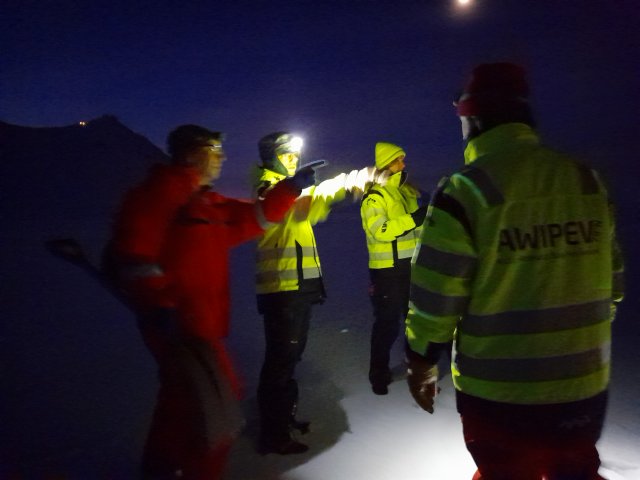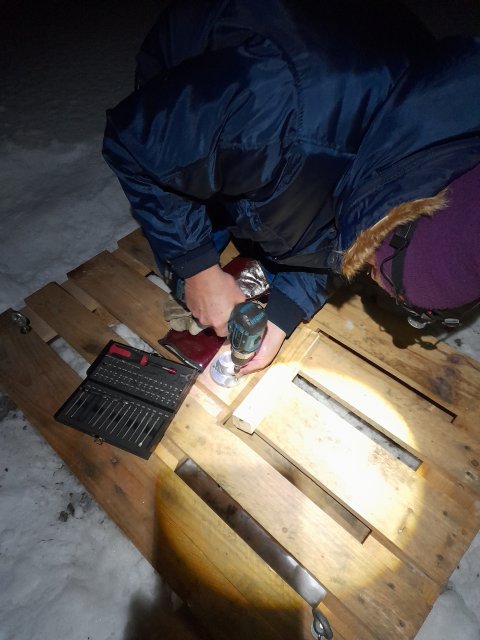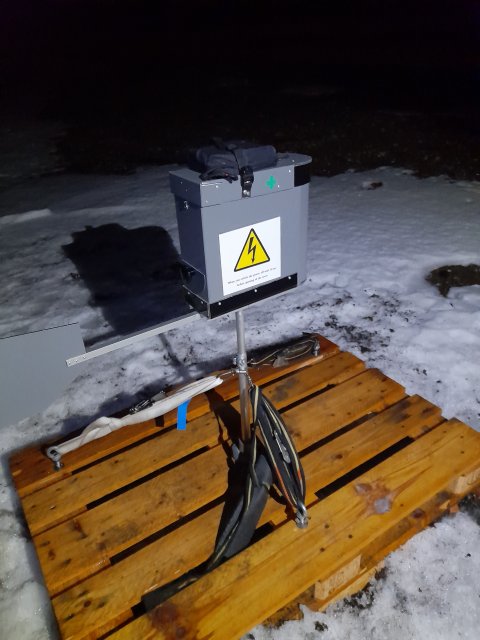Snow-air interactions in the Arctic
Strong winds and blizzards are not just a challenge for navigation in Svalbard. They can also lead to electrical charging of snow particles and changes in the ionic composition of snow.
This SIOS Access project, led by Kateryna Tkachenko (Institute of Geological Sciences, Ukrainian National Academy of Sciences), aims to understand the relationship between these processes. To fulfil this aim, Kateryna designed an instrument to collect differently charged fractions of snow during blowing snow events for their subsequent chemical analysis by ion chromatography, and then visited Ny Ålesund in November 2022 to initiate her year-long field experiment.
The instrument contains a box-like housing, with negative and positive electrodes inside and an opening at the front. Snow particles charged during blizzards enter the instrument through the opening and are attracted by the charged electrodes. Positively charged snow is collected by the negatively charged electrode, and vice versa. The electrodes are powered by a voltage converter (converts 5 V to 7.3 kV) on the instrument cover. The instrument rests on a ball bearing and has a tail, allowing it to rotate and remain aligned to the wind direction.
|
Figure 1. The instrument for collecting snow. Photo credit: Kateryna Tkachenko |
Figure 2. Choosing the installation location of the instrument with the AWIPEV team. Photo credit: Kateryna Tkachenko |
At the AWIPEV facility in Ny Ålesund, the AWIPEV team worked with Kateryna to install the instrument in the field.
Kateryna is currently a visiting scientist at the University Grenoble Alpes, affiliated with the Institute for Geosciences and Environmental Research (IGE), Université Grenoble Alpes / CNRS / Grenoble INP / IRD. She has a close collaboration with Hans-Werner Jacobi at IGE, which was previously supported in the frame of the PAUSE Program of the Collège de France and financed by the French Ministry of Higher Education and Research. EL-SNOWCHEM is conducted in collaboration with ARCSNOW-2 (RIS-ID 10515). The staff at AWIPEV will operate the instrument during blowing snow events for the next year, and samples will be stored, shipped and analysed by ion chromatography in the frame of ARCSNOW-2.
|
Figure 3. AWIPEV engineer, Ingo Beninga, helps with the installation of the instrument. Photo credit: Kateryna Tkachenko |
Figure 4. The installed instrument. The housing of the instrument will be stored in a cold building, except for during snow blowing events, when it will be installed on its leg and switched on. Photo credit: Kateryna Tkachenko |































